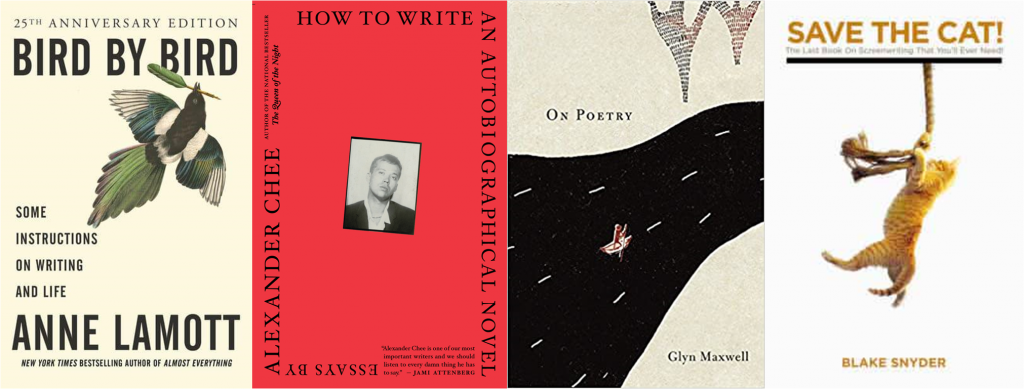Hello Everyone,
Congratulations on your offer of a place to study English Literature and Creative Writing (QW38) at Newcastle University! I am the Subject Head for Creative Writing and my colleagues and I hope to welcome you to our department this autumn.

We will send out reading lists for all our modules in the Autumn once we have updated our teaching to take our latest reading and research into account. For now, I have asked some of my colleagues to suggest some books and exercises that may help you learn more about the craft of creative writing.

First the books, which should be available through your local library. Preti Taneja told me Anne Lamott’s Bird by Bird would be helpful to anyone who wants to write creative prose in general. She found Alexander Chee’s How to write an Autobiographical Novel very useful too. Sinéad Morrissey is an advocate of Glyn Maxwell’s On Poetry. Tina Gharavi said she thought Blake Snyder’s Save the Cat was an excellent resource for budding screenplay writers. And now the exercises. Tara Bergin would like you to try the following task, which asks you to make a poem by following instructions, rather than waiting for inspiration to strike.
First, get a pen/ pencil and paper. Now write down the following:
• Two colours you like and why
• Two words you like and why
• Something you’re afraid of and why
• Something that makes you laugh and why
• Something you want (but don’t say why).
Now, using only this information, in any order, compose a short poem. Next, type it up, adjusting as you see fit. Give it a title.
If you want to experiment further, see what happens to your poems if you change the perspective (e.g. change it from the first person (I’) to the second person (‘You’).
Rachel Hewitt invites you to start thinking about non-fiction prose by reading the article ‘Chalk and Bone’ by Sinéad Gleeson.
Ask yourself:
• What sort of stories could be told by writing about the body and its experiences?
• Is language adequate to describe physical experiences?
• If you can’t find the right words, why might that be?
• Why might you want to write about the body?
As you’ll see from reading this essay, Gleeson doesn’t always spell out the emotions that are linked to her physical experiences. She doesn’t directly tell us how she felt emotionally about her experience of living in her body. She shows us her bodily experiences – and leaves us to work out how we feel about them – instead of telling us. Can you do something similar? Try to focus on what happened, instead of the emotions that it conjured up. And, as an experiment, try to do this without using any metaphors or similes.
I hope you found these exercises useful. Please do not worry if you found them challenging; we do not expect you to have studied creative writing before. For most of you it will be a completely new subject, even if you have done some creative writing on your own. Our recommendations should simply give something for you to think about over the summer.
If you have any questions about the material in these emails, please do get in touch with us through email. Alternatively, you can find even more tips and resources on our Twitter page, or by searching the hashtag #NCLReady.
Best wishes,
Lars Iyer
Reader in Creative Writing
Subject Head, Creative Writing

